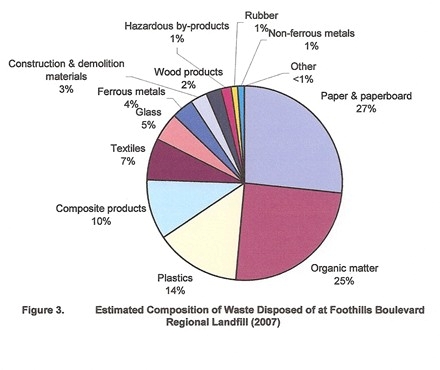Waste Management Plan Up For Public Input
By 250 News
Thursday, July 17, 2008 03:45 PM

Prince George, B.C. – The Regional District of Fraser Fort George has approved heading to public consultation on the draft plan to manage garbage in the region for the next 10-20 years.
The plan is aimed at reducing the amount of garbage heading to the landfill sites while encouraging recycling.
Some of the highlights:
- with one half of all garbage recyclable, a curbside recycling program is the top priority
- New $30-$40 dollar a year fee per household in Prince George for a curbside recycling program. The plan suggests residents may see some cost savings as they be able to move to a smaller garbage bin, or the City may see some savings in the tipping fees if the amount of garbage is less than had been dumped in the past. The City of Prince George will continue to operate the Quinn Street and Vanway waste management centres as a “one stop shop” for a range of waste materials, including recyclables, yard waste and a range of household hazardous wastes.
- Depot based recycling for the balance of Regional District
- Distribution of up to 1,000 backyard composters every other year (or as long as demand is sustained)
- A user pay policy for garbage disposal will be established that will ultimately require that all users of the RDFFG garbage disposal facilities will be assessed a fee for disposal.
- There will also be a policy of banning items from the landfills if there are recyclable programs in place.Once a material or product has readily available recycling or composting alternatives in the RDFFG, this material/product will be banned from disposal as garbage. Currently, recyclable cardboard, metal, motor oil and tires have readily available recycling opportunities so these items will be the first materials banned from the garbage in the RDFFG. A disposal ban would be phased in, with the first phase being promotion and education, the second phase being notifications given to haulers bringing in garbage containing banned materials, and the final phase being a ramp-up of financial penalties.
- Expand the composting facility at Foothills Landfill
Residential users are not the only ones to face changes, construction and demolition waste accounts for about 21% of the waste dumped at the Foothills Landfill site, and there will be discussions with planning departments to deal with those issues.
Ideas for handling such waste include:
- variable permit costs (deconstruction vs. demolition) to encourage source-separation,
- reuse and recycling of C&D Waste;
- mandatory solid waste management plans for large construction projects to ensure that waste diversion is considered in the planning for construction; and
- adopting green building standards (e.g., LEED) that will reduce the amount of waste generated during construction and through the life of the building.
Some of the transfer stations serving smaller areas will be closed, and three landfill sites ( Mackenzie, Dome Creek, Sinclair Mills) would be closed. Closing landfills is not cheap, its estimated to it will take $4.7 million to deal with the three added to the list, and 13 others that are already no longer receiving garbage. Director Denis Gendron says having people drive to and from Prince George to drop their garbage doesn't seem to be very 'green' "It would seem to me that having one truck picking up material once a week would have less impact than 800 people driving to P.G."
The consultants say the impact from the methane created by one landfill is far more than the impact of the vehicles travelling to another site.
The Municipal solid waste currently being collected in Mackenzie will be shipped to Foothills.
It is thought the changes will extend the life of the Foothills Landfill to 18 years from the current expected 13 years.
The changes will be phased in, with recycling in place in Prince George by 2012, but the changes are not cheap. The annual bill for the new programs will be in the $11 to $13 million dollar range.
The most significant new costs are:
• capital expenditures for yard waste composting facilities ($595,000)
• a transfer station for Mackenzie ($740,000 capital cost)
• final closure of landfills and on-going monitoring (an average of $647,000 in capital costs annually).
There are only a few ways to recover those costs:
�� User fees;
�� Revenues from landfill tipping fees;
�� Tipping fees;
�� Grants, and
�� Taxation;
�� Sponsorships.
�� Sales (e.g., backyard composters, compost,recyclables)
The plan aims at reducing garbage heading to the landfill by 35% by 2012, and 50% by 2015 Director Harvey Clark says total recycling is very labour intensive (to sort the garbage) and it gets very expensive "I hope we don't go there."
Director Colin Kinsley says there are some communities in Europe which use the garbage to fire up heat creating plants, which then produce electricity which is sold on the grid. The consultants say yes, the economics of using garbage for "energy" now make sense as fossil fuel costs are shooting through the roof, however, the Regional District is not quite big enough to economically produce energy from garbage and there is still a need to deal with the residuals contained in the emissions and the ash.
The draft plan will now be offered for public consultation. It is not a done deal says Director Don Zurowski "I just want people to know this is not a done deal, the doors are still wide open."
That input will be used to revise the plan before it is finalized.
You can read the full report by clicking here.
Previous Story - Next Story
Return to Home











The curbside recycling program sounds like a good idea.